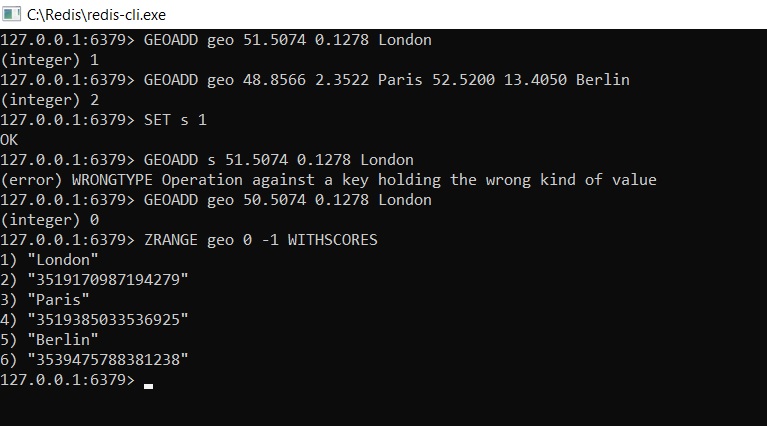
- #The geodist database install#
- #The geodist database update#
- #The geodist database full#
- #The geodist database iso#
The command-line tool only prints basic stats and the progress bar. debugīy default, the library does not print any extra information. The done event includes the whole updated array as an argument. In case you need to process the list of files straight away, you don't need to re-load holidays.json from disk.

#The geodist database update#
This will create or update /Documents/holidays.json which uses the following format: [ files`)) Or programmatically: const database = require('exiftool-json-db')Įmitter.on('done', => console.log('Updated!')) On the command line: exiftool-json-db -media '/Photos/Holidays' -database '/Documents/holidays.json'
#The geodist database install#
Quick start npm install -g exiftool-json-db This package requires exiftool from (version 9.70 or above). See below for examples of useful queries to run.
#The geodist database full#
This means you can update the database within a few seconds when adding 20 photos to a collection of 10,000 - and then load that full collection in memory for processing (including captions, timestamps, GPS data.) in just a few milliseconds. The result is the same as running exiftool on an entire folder, except that results are cached and only updated when files are added/changed/deleted. This package helps maintain a JSON database of photo & video files, including all their metadata. Maintain a JSON collection of photos and videos with their metadata Weighted distance (pop-wt, km) theta=-1.Track a collection of photos and videos with their metadata exiftool-json-db Weighted distance (pop-wt, km) with theta=1 (theta measures the sensitivity of trade flows to bilateral distance dkl) distwces GeoDist provides several geographical variables, in particular bilateral distances measured using citylevel data to assess the geographic distribution of population inside each nation. Simple distance between capitals (capitals, km) distw GeoDist makes available the exhaustive set of gravity variables used in Mayer and Zignago (2005). Simple distance (most populated cities, km) distcap Variable coded as 1 when the two countries were or are the same country. Variable coded as 1 when the country in `iso_o` is a colony of the country in `iso_d` after 1945. Variable coded as 1 when the country in `iso_o` is a colony of the country in `iso_d`. Variable coded as 1 when the two country share the same colonizer after 1945. Variable coded as 1 when the country in `iso_o` was ever a colony of the country in `iso_d`. Variable coded as 1 when the two countries have at least 9% of their population speaking the same language. Variable coded as 1 when the two countries share the same official language. Variable coded as 1 when the two countries are next to each other and 0 otherwise.
#The geodist database iso#
iso_dĬountry of destination as ISO codes in three characters. We have calculated different measures of bilateral distances available for most countries across the. iso_oĬountry of origin as ISO codes in three characters. GeoDist makes available the exhaustive set of gravity variables used in Mayer and Zignago (2005). Cette mthodologie permet de calculer des distances internes aux pays de manire cohrente. ArgumentsĪ data frame with 50176 observations on the following 14 variables. L’ide, inspire de Head and Mayer (2002) est de calculer les distances entre 5 fCEPII, WP No 2011 25 Notes on CEPII’s distances measures deux pays comme une moyenne des distances entre leurs principales villes pondre par leur population. Returns the minimum geodesic distance between two GEOGRAPHY or the minimum. The distance formula used is a generalized mean of city-to-city bilateral distances developed by Head and Mayer (2002), which takes the arithmetic mean and the harmonic means as special cases. The GEOMETRY data type is a preview feature that is available to all accounts. The idea is to calculate distance between two countries based on bilateral distances between the largest cities of those two countries, those inter-city distances being weighted by the share of the city in the overall country's population. The two weighted distance measures use city-level data to assess the geographic distribution of population inside each nation. These two variables incorporate internal distances based on areas provided in the `geo_cepii` dataset. The simple distances are calculated following the great circle formula, which uses latitudes and longitudes of the most important city (in terms of population) or of its official capital. There are two kinds of distance measures: simple distances, for which only one city is necessary to calculate international distances and weighted distances, for which we need data on principal cities in each country. Provides different distance measures and dummy variables indicating whether the two countries are contiguous, share a common language or a colonial relationship. Dist_cepii: Data on pairs of countries including distance measures and dummy variables indicating common attributes Description


 0 kommentar(er)
0 kommentar(er)
